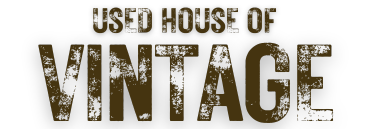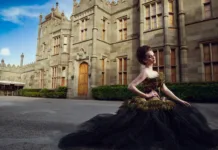Last Updated on February 26, 2025 by Used House Of Vintage
When purchasing regular or vintage clothes, the only thing that matters is how superbly it fits your body. If the garment suits your body and you love how you look and feel in it, what do you need more? For instance, imagine you are wearing a beautiful dress, and someone randomly came and said, “Fabulous dress! What size is that?” In most cases, people also ask, from where have you bought this dress? Or What is the price of the stunning dress you are wearing? You would happily answer them but at a point vintage clothes vary according to the decades, styles, and patterns, and that’s how the differentiation of size happens somewhere.
Undoubtedly, it is true that vintage clothing varies from the standardized thumb rule clothing sizes of today. Even the majority of people find it challenging to shop perfect sizes of vintage clothes for them. But have you ever tried to find the reason? The differences came in sizing because, in historical times, fashion was not mass-produced the way it is today. In earlier times, people worked hard to produce unique clothes with superior quality and tailoring. Let’s dive into the article to know the key points and the sizing tips to measure vintage clothing.
Read this too: How to Shop for Vintage Clothing ?
Key things to consider in measuring vintage clothing
Before putting your hands on your favorite vintage piece, you should always check the size and the fit. There are some critical points that you should ask yourself before buying a vintage garment.
1. What kind of fit do you expect from the cloth?
The garment industry has no hand in developing the thumb rule of standardizing the size. It is the people who have their personal choices. They decide on the basis of their choice whether they want a loose fit or an exact body-hugging fitting.
2. What is the correct measurement method to go off?
Sometimes you often get confused about what is the right size for yourself. For instance, if you want to buy a dress and your hips measurement is smaller than your bust. So, always go with a larger size of your body. This same also happens for men’s vintage clothes. So, for example, if you are a man and your chest measures larger and broader than your waist measurement, always use chest one as your point of reference.
Furthermore, if you are getting your outfit tailored, always measure the size with your undergarments on, not the outer layering. Try this hack once, and thanks to it later because you will love the accurate measurement and fit you will like after this.
Also, there is a lot of difference between the sizing patterns of the earlier and today’s modern times. So, to make your vintage clothes purchase worthy, always make sure to try the pieces before buying them.
Read this : How To Store Vintage Clothes ?
Sizing tips
There is no doubt that everyone looks at the clothes label to check the size first. In some bad cases, people avoid trying on their garments just to save time, but they are not even sure whether the vintage cloth they are buying will fit them. Consequently, it is better to try than to waste money on the clothes you think will suit you. Do not ever believe what the cloth label says about the size; just try on the vintage pieces you like.
How to measure yourself for vintage clothing?
1. Chest/bust:
Wrap the measurement tape around the broader or, say, widest part of the chest/bust. Generally, the measurement is done just under the armpit. Record all the way in inches. But the juicy question running in most of your minds is how this measurement will help you? So, for example, if your cloth measures 2 inches larger than your actual body size, the fitting you will get will be pretty tight. Just in case, if the garment measures 8 inches more, then you can think that you will surely get a loose fit in this.
2. Waist:
So, for the waist region, cover the measurement tape around your body where you usually wear your jeans or trousers. The garment you will buy should have exactly the exact waist measurement.
3. Shoulder:
You will find this measurement process interesting once you get into it. So, for shoulders, measure the length from one tip of the shoulder to another tip behind the neck.
4. Length:
The length of the outfit depends on the style. If you want a dress, it will probably have long length than other pieces of cloth.
5. Hips:
Do not forget to measure the fullest part of the hips.
End thought
Now, it is the time to face the truth. As you have seen, the chances of getting the perfect fit for you can be difficult and sometimes easy, depending on the type of style you are buying. It is a general fact that purchasing vintage clothes with loose fits will be an overall easy task. But in case the clothing does not fit you as per your expectations, what will you do?
Firstly, most of you will think of the option of alteration. Option two is to get the exact piece tailored. Both these options have their pros and cons. On the whole, go for any of these options but buy good quality fabric pieces that will be your partner in the long run. Get the size that fits your largest part perfectly, and then have it taken in on other small parts for the dream fit. Hope you liked the article!




